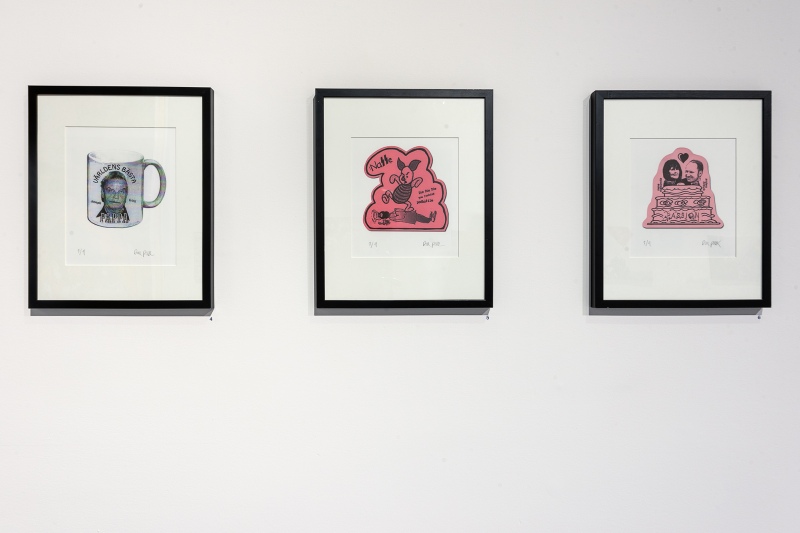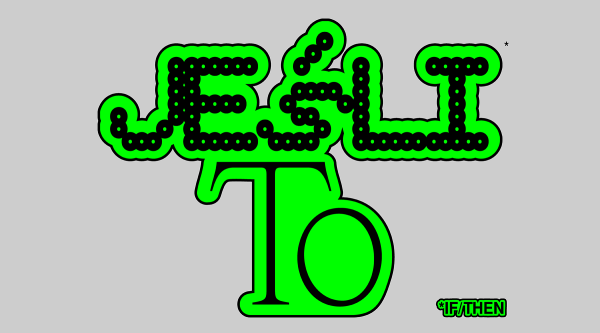Curators on the discussion around the Political Art exhibition
The main aim of the Political Art exhibition is presenting the work of artists who address important social and political issues, and above all the question of creative freedom and new threats that it might face today. In this sense, the featured artists speak on behalf of social groups whose identity is based upon the freedom of speech and artistic expression. These artists have repeatedly faced limitations in exercising the freedom of expression; some were persecuted and sentenced for their artworks.
One such artist is Aleś Pushkin, a Belarusian painter and performer who is currently, once again, under arrest and awaiting a trial that may end with a long imprisonment. The reasons for his imprisonment are allegations of promoting Nazism. Similar allegations were made against the Swedish street artist Dan Park, who was convicted of artworks expressing hatred against ethnic and racial minorities.
In both these cases, the accusations are purely political, ignore the context and thus remove the possibility to interpret the artworks correctly, which is crucial when it comes to contemporary art. In their work, artists use a controversial language and provocative symbols. Moreover, they often disrupt the generally accepted modes of communication. Their work should not be read literally – we should take into account the context and connotations and events to which they relate. The artist’s aim is not to promote hatred towards anyone; rather, they attempt to give the society a chance to take a better look at their surroundings, to penetrate deeper into the essence of reality.
Dan Park has never declared to be a Nazi, a neo-Nazi, or someone that hates other ethnic and religious groups. Park, to our knowledge, declares to be an anarchist. Also, his artworks mentioned in the text are not directed at specific ethnic or religious groups.
The action in which Park placed Cyclone-B cans and small beaded swastikas near the Synagogue in Malmö was not directed against Jews. Quite the contrary — it took place at a time when attacks on Malmö’s Jewish community intensified and were widely underestimated. In this provocative way, Park sought to reveal the growing problem of anti-Semitism in Swedish society, that — as he showed — has already led to the Holocaust once. From this perspective, we can hardly conclude that the artist denies the Holocaust, since he refers to it in his work. At any rate, the court cleared Park of charges related to this action.
Similarly, Park’s work entitled Hang On Afrofobians depicts three black men with loops around their necks and echoes a terrible event that took place in Park’s hometown, Malmö. A man of African descent went to a playground with his one and a half years old son. For some reason, he got into a quarrel with a group of women. Shortly thereafter ten men arrived and attacked him. They beat him in front of his crying child, and then tried to throw him off a pedestrian bridge over a highway. Luckily the man survived the attack. For a week, the Swedish public was engaged in the case. The media portrayed it as a horrifying racist event, assuming that the perpetrators were white Swedish men. Suddenly a small blog exposed the fact that the men were Kurds, which led to an immediate news blackout on the case — it disappeared from the public sphere. This was because of a conviction that bad news involving people belonging to a minority can lead to racist attacks against other members of minorities. This belief has never been tested or proven, and it is somewhat a taboo even to discuss it.
Park summarized the entire event in one collage. The pedestrian bridge is the central motive. Three heads are hanging in nooses suspended from the walkway — each has a name, all three belong to black men. One is the victim; the two others were active in the first week of debate, accusing the Swedish society of being racist. They both went silent after the revelation of the perpetrators’ ethnicity. The collage therefore says: racists can get away with being racist, as long as they belong to an ethnic minority.
Virtually all Park’s artworks are a critique of political correctness and appeasement policy implemented by Swedish authorities. Attempts to label Park a Nazi and anti-Semite are aimed at excluding him from public debate and are an example of cancel culture – a phenomenon that is discussed, among others, by this exhibition.
Political Art features the artworks created by 27 artists from all over the world. They address important issues: violence against women; people persecuted for political reasons; the apathy and infantilism of Western civilization leading to an increase in terrorism and violence. Above all, they talk about the need for freedom and tolerance that cannot be the privilege of certain social groups.
Jon Eirik Lundberg and Piotr Bernatowicz


